Cows, cattle, livestock, whichever name you choose to call them, are big animals! As a homesteader, it is essential to provide fresh dairy, eggs, and meat for your family to live comfortably daily. This means raising enough livestock to produce what you need in your backyard to be self-sufficient.
Full-grown cows can range in weight from around 1102 pounds (500kgs) to 2645 pounds (1200kgs) for large cows and around 800 pounds (360kgs) for mini cows. Bulls and cows have different weights, depending on the breed and what purpose they have been bred for.
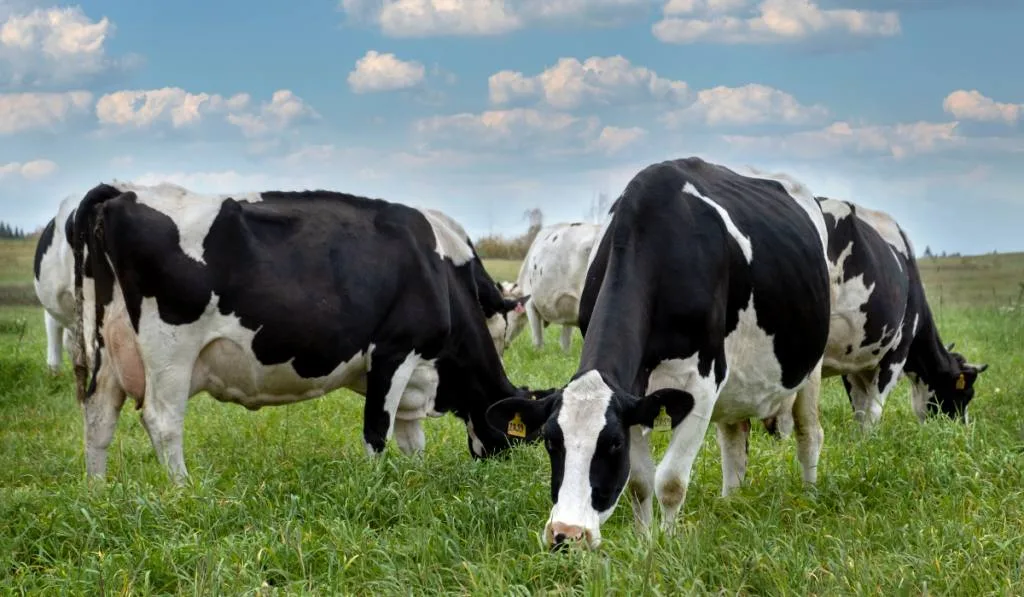
Owning a herd of cows can be hard work. These animals can grow very quickly, so you do need to have the facilities to keep and look after them.
An adult cow will graze all day and requires quality grass year-round so that it can produce the milk and meat required to feed your family. There are many requirements needed to keep and raise cows.
Table of Contents
What Size Cow Can I Keep?
To raise livestock, you would need to meet specific requirements, the biggest of which is having enough space to cater to each animal. Cows need land to roam and graze on and barns or lean-to’s to overnight in.
The weight of each animal should determine the number of cows that you are planning to raise.
Depending on the size and weight, you can calculate how much space you would need per animal and how much grazing you would need.
Cows, or cattle as they are known at auction, come in all different shapes and sizes, so before you buy any, you should answer some basic questions first.
1. Can I Keep Cattle On My Homestead?
Find out what the laws and regulations are in your area before deciding on which cows to buy.
You may only be allowed to keep small livestock like chickens in your area, in which case you will have to re-think your plans for raising cows to provide your meat and dairy.
The laws in your area may prohibit raising livestock at all in your back yard or on your homestead.
They may even have rules regulating the number of animals that you can have on your property, how many bulls you can keep, as well as on-site butchering restrictions.
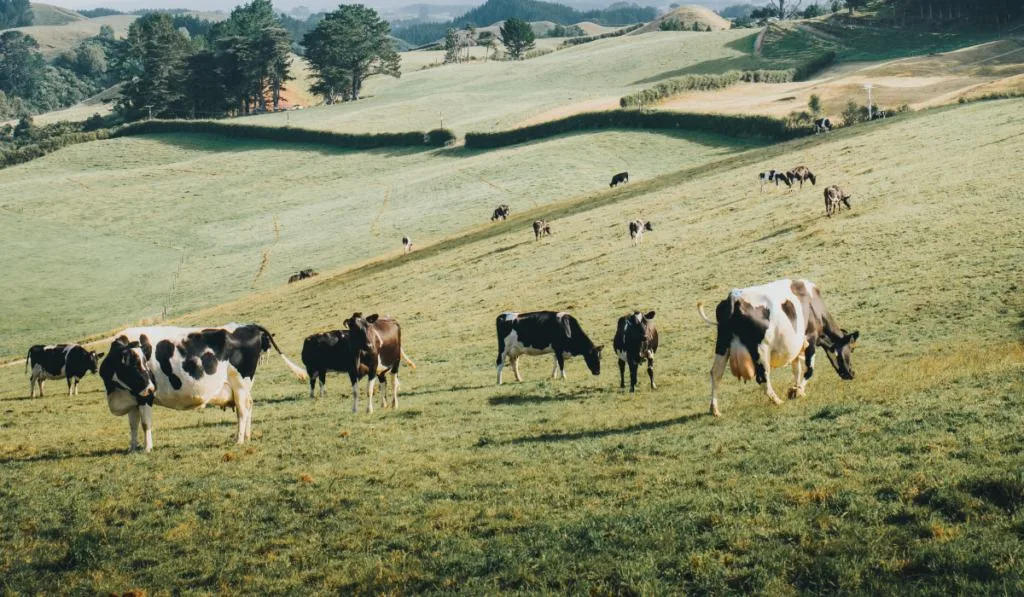
2. How Much Land Do I Need?
A primary land measure is two acres per animal for grazing. The size of your herd could be restricted by the land available.
Bear in mind that you will have to buy-in hay or grass for feeding the animals during the colder months of winter if you do not grow your own for harvesting and storing for the colder seasons.
An average-sized cow can eat up to 24 pounds (10 kgs) of hay per day.
3. What Else Do I Need To Know About Raising Cows?
To be a responsible cow owner, you must provide for the cow’s needs.
Make sure that you can supply freshwater, even when the water is frozen, that you can treat minor injuries when the need arises, that you can pay vet bills when necessary, or that you can indeed slaughter the cow when you need to.
You might need to take courses in basic animal husbandry and basic first-aid in case there are any accidents on the homestead or even problems with the cows when calving.
Keeping a herd of cows securely locked up in a barn overnight requires a big barn that could need maintenance.
The pasture that they are grazing in during the day needs secure fencing to keep the cows in one place. You will need to factor farm maintenance into your costs.
Which Breeds Of Cows Are Good For Homesteading
There are many varieties of breeds of cows, so do the research before buying to see which breed would best suit your homestead and lifestyle.
Your requirements for buying a cow could depend on what you need them for. Different breeds are raised for their milk-producing, meat, and even brute strength to be used as work animals on the homestead.
Let’s have a look at some of the breeds which are best for homesteading.
1. Guernsey Cows
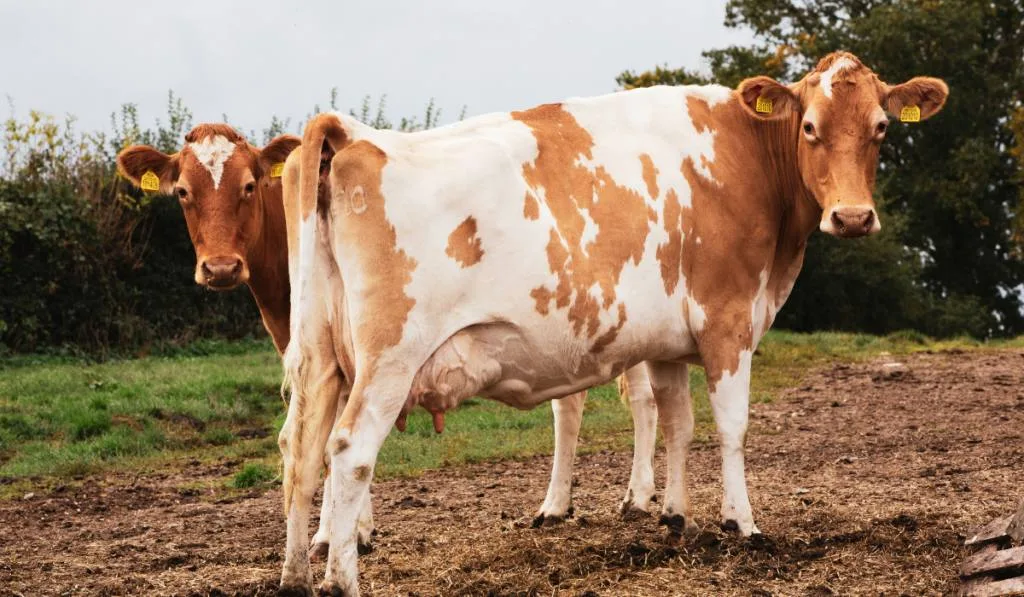
A dairy cow breed from the Isle of Guernsey in the Channel Islands between France and England. This a high-quality, high milk production cow, producing up to 6.4 gallons (29 liters) per day.
Usually reddish-brown and white in color, the female Guernsey cow weighs up to 1102 pounds (500kgs), while the male bull can weigh 1540 pounds (700kgs).
They are medium-sized cows measuring around 54 inches (137cm) in height. They are adaptable to climate changes and are a great fit for a medium-sized homestead.
2. Jersey Cows
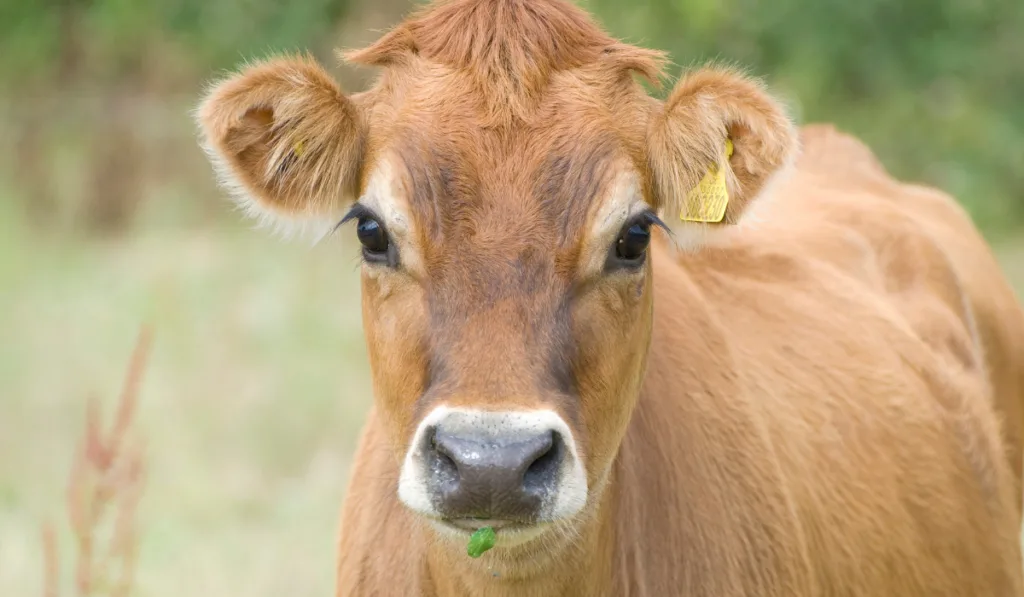
A top performer in the dairy community, this cow can produce 13 000 liters of milk in its lifetime! Jersey cows originate from Jersey Island in the British Channel.
Golden yellow in color with a white muzzle, the female Jersey cow can give birth at the age of 19 months and then produces calves annually.
The female Jersey cow weighs up to 1102 pounds (500kgs), with the male bull weighing 1807 pounds (820kgs). They are classified as a small to medium breed size with both the male and female having thin, curved horns.
3. Hereford Cows
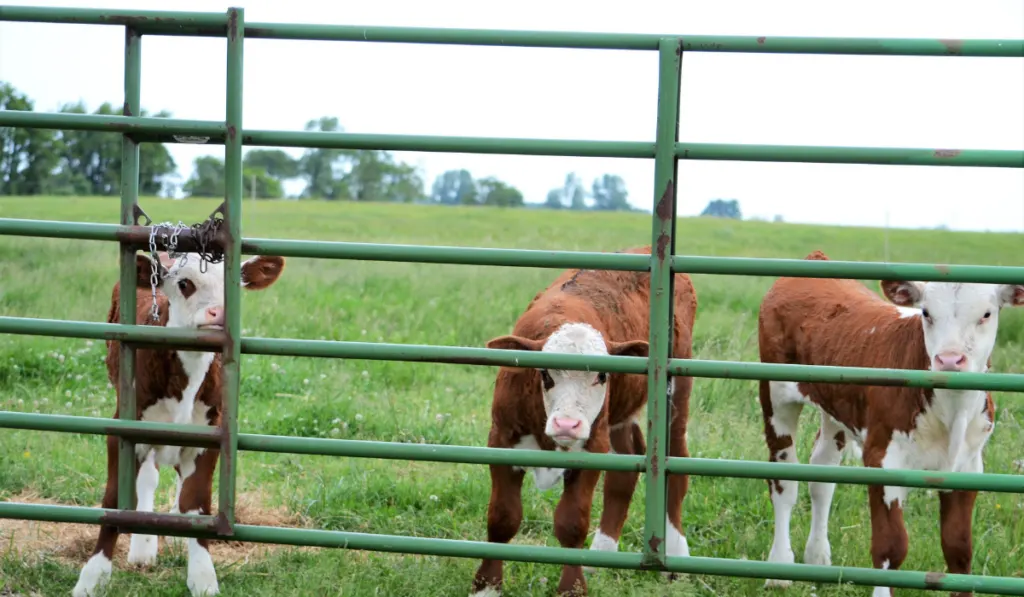
A medium-large breed used for succulent and tasty beef, these cows were once used as draft cattle to pull carts and plows. Originally from England, both the cow and the bull are dark red with a white face.
The Hereford bull weighs 2645 pounds (1200kgs) and the cow 1765 (800kgs), with a height of around 59 inches (152cm).
Cows calve once a year and are caring mothers. Bulls are kept as studs until they are 12 years old. They are extremely hardy, so well suited to homesteading life.
4. Angus Cows
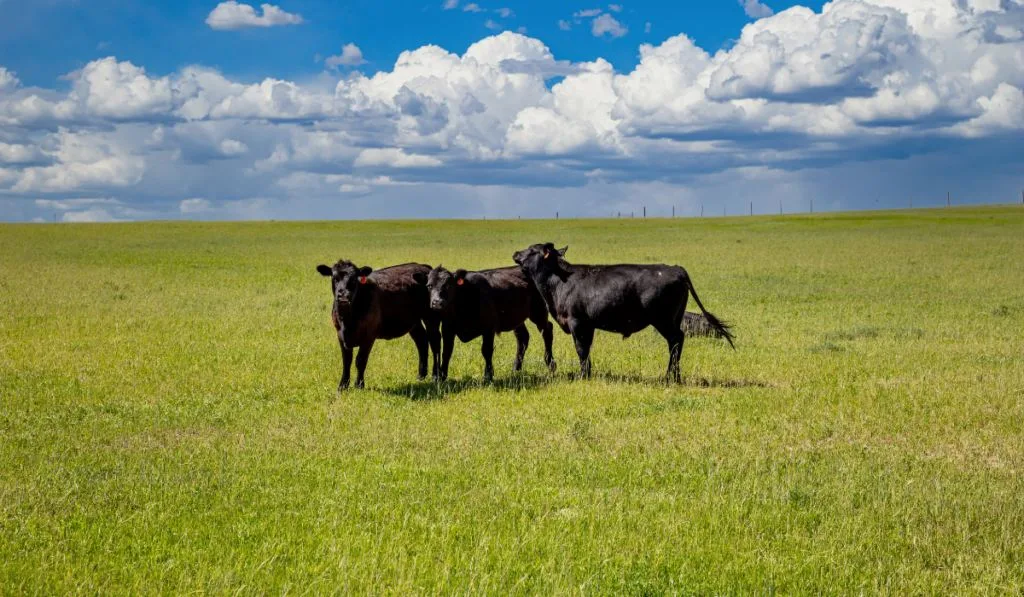
One of the world’s top beef cattle breeds due to the high quality of their meat.
Originally from Aberdeen in Scotland, their coat is solid black or red. Angus cows live 12 to 13 years, and the cow will still produce calves until that age. Highly adaptable to any weather, they are a low-maintenance breed.
The Angus cow can weigh 1212 pounds (550kgs) and the bull 1873 pounds (850kg). The bull can be aggressive, although the breed is known for being docile and compliant.
5. Simmental Cows
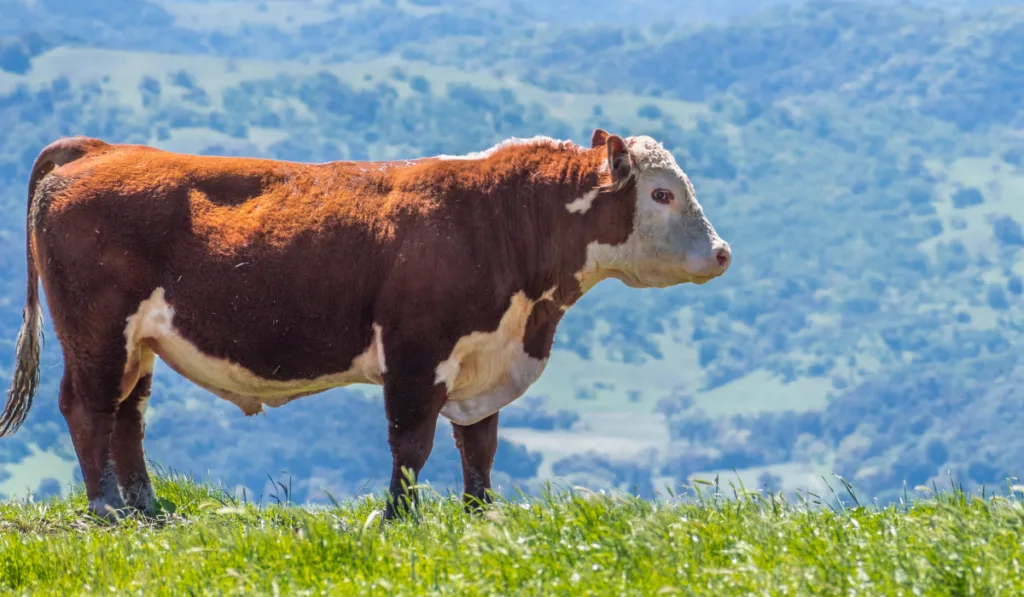
These cows are considered to be one of the most popular cattle breeds in the world. A medium-large breed cow, the Simmental originates from Switzerland and is well known for both their milk and meat production, making them a dual-purpose cattle breed.
Simmental cows are a good starter breed, so they are perfect for the homesteader.
They are well suited for harsh climates and can survive very cold winters as well as the beating sun in the summertime.
They are red or white-spotted in color with short horns that grow up and curl backward. The Simmental bull weighs 1866 pounds (850kgs) and the cow 1984 (900kgs).
6. Mini Cows
Mini cows are perfect for the homesteader! Being smaller in stature means that they do not need as much space or food as bigger breed cows.
Often bigger cows produce too much meat or milk for the average family, making a mini cow the ideal meat and dairy supplier for your family!
Mini cows are smaller and easier to handle. They rarely grow to a height of 48 inches or weigh more than 800 pounds (362kgs). Let’s have a look at a few breeds.
- Miniature Belted Galloway (Belties). A hardy breed, they are great dual-purpose milk and meat producers. They are not picky eaters and will eat whatever is available to them. They weigh 400 pounds and can reach a height of 47 inches (119 cms).
- Mini Jersey cows. Bred as milk producers, they provide 2 -4 gallons of high-quality milk per day. They are a little heavier at 800 pounds (362kgs) but are still smaller than a full-sized cow.
- Miniature Scottish Highland Cow. Probably the most well-known mini cow breed, this cow is bred for milk and meat! Perfect for harsher climates, they can feed off the land, which will not support bigger cows. The male weighs around 500 pounds (226kgs), with the female weighing around 350 pounds (158kgs).
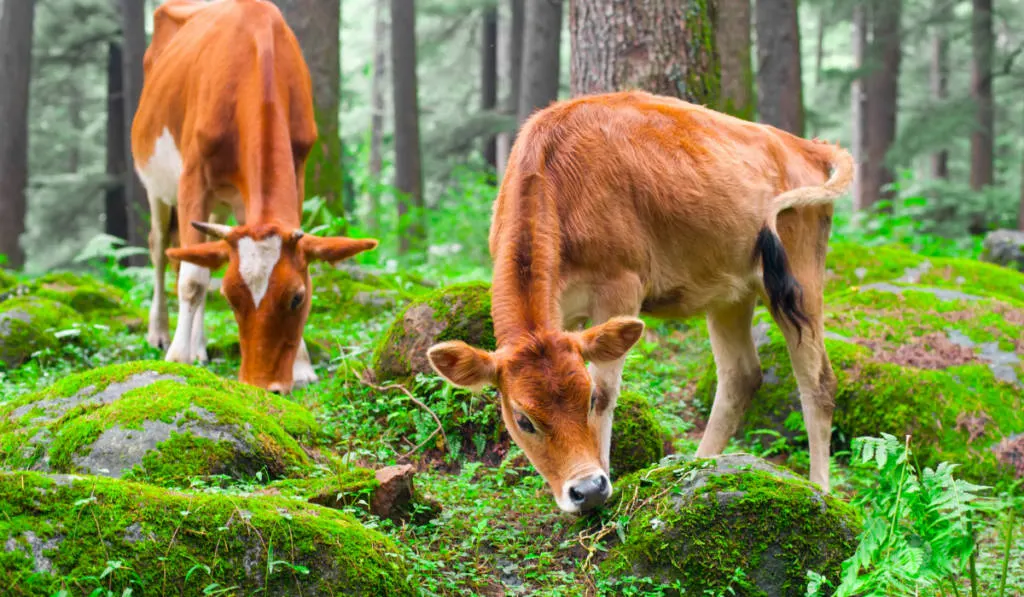
Conclusion
Raising cows in order to be self-sufficient is ideal for any homesteader. Cows are the perfect combination of pet, companion, milk, and meat providers. The condition of owning and raising them is that you have space for them to graze.
Keeping your herds to a manageable number will place less strain on your land and allow you to enjoy raising these wonderful animals without the stresses of overworked land.
The homesteading life is meant for enjoyment as well self-sufficiency, and enjoying looking after your animals is part of the journey!
Resources
- https://romneyridgefarm.com/why-mini-cows-are-perfect-for-the-small-homestead/
- https://www.iamcountryside.com/homesteading/5-homestead-animals-for-self-sufficiency/
- http://theselfsufficientliving.com/10-favorable-breeds-of-cows-to-select-for-homestead/
- https://www.survivalsullivan.com/how-to-raise-cattle/
- https://domesticanimalbreeds.com/category/cattle/dairy-cattle-breeds/
